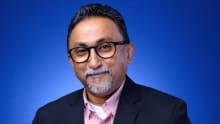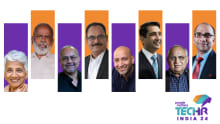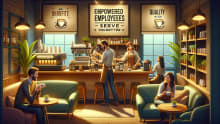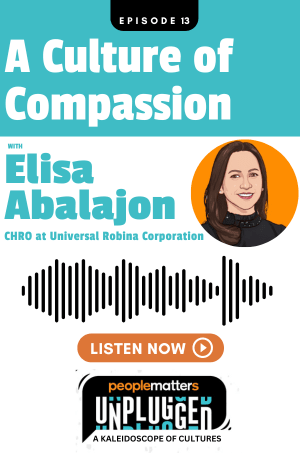A new look at capability approach: Strategic HR perspective

Capability is nothing but the power to do something. The more one has, the better it is, for individuals as well as for organizations they work for. More power provides more choices and the more the choices, the more one enjoys freedom. This is an interesting continuum, whether we consider human beings in a global context, citizens in a national context, or employees in an organizational context. The agency function gets performed by different agencies in different contexts. Whatever the case may be, one thing is sure that one has to improve one’s capabilities in order to enjoy more freedom. And in case of organizations, HR has to actively involved in facilitating the process of building capability so that the employees get empowered and make choices that are compatible with organizational goal.
One should not misunderstand the term freedom in the sense that one can do anything in the organization, once one has a better capability. Here it is related to one’s choices and expectations. It is one’s ability to select from the choices available and the sense of freedom one has acquired through enhancing the ability to adapt to the changing landscape of business. HR works as an agency to invest in employees through providing exposure and learning opportunities. Employees have to be provided with the wings that help them tread a critical path; that prepares them to face the tyranny of uncertain future.
Uncertainty drives uniqueness. In the times when pink slips are being used frequently and the future is unclear, a unique set of capabilities gain currency helping employees to assure their undisturbed stay in the organization. One has to create and develop one’s identity through such set of skills and knowledge which is unique in nature. Employees have to develop some such distinct ability sets which can enhance employee brand value. These distinct capabilities translate into firm’s capability allowing them to operate in all spheres and domains competitively. As Dave Ulrich mentions – Capabilities become the results of HR; they fill in the middle ground between HR investments and firm performance; they serve as the transition from mission, vision, strategies, and values to action. Investments have to be made to enhance capabilities which in turn has to result in better employee, viz-a-viz, firm performance.
HR strategies have to be designed in such a way that enthuse a sense of responsibility in the employees and allows them to learn, unlearn and relearn the skills to operate in future organizations. It has to further culminate into firm’s capability to compete and improve its performance. These capabilities have two important components, viz., behavioral and technological.
The behavioral component has to help in better understanding of OD intervention so that they are ready to embark on the successful journey towards imbibing change. Technology is a big disruptor whether it is its use in product development and delivery or developing technology product as such. Organizations have to train and develop their employees to adapt to new technologies as fast as they can because human obsolescence is much greater a challenge in the fast-changing technological milieu.
Maruti has taken a lead in producing excellent results in last few years which is the result of employees capability and their tiring efforts. Kenichi Ayukawa, the Managing Director and CEO of Maruti Suzuki India Ltd, acknowledge it – People are very important and our workers is what we actually own in business. How we make full use of their capability is always the key. This is what has made Maruti occupying more than fifty percent of market share in the industry. Kenichi has led the organization from the front and employees’ capability has been his prime source of focus. He allowed freedom to his engineers which helped them conceive and develop Vitara Brezza brand from scratch.
The challenge of time is to identify potential capabilities and invest in them steadily. That way organizational change would get embraced easily and resistance shall get managed itself. This is one of the qualities of learning organizations. We have WIPRO which has portrayed that character through various practices that they followed in developing and managing HR capabilities. Coca-Cola is a learning organization that generates ideas from beyond and from within to innovate, experiment, train and re-engineer at product, service and employees level. It has helped them retain talent and respond to market forces successfully.
In these organizations, a lot of freedom gets in action and their employees demonstrate high capability levels. This is how they are able to sustain competitive advantage. Capability approach as propounded by Amartya Sen has its application in business organizations, calling for investment in employees. Strategic HR has to learn much more from economists in order to understand employees and to retort to prevailing conditions. Theodore Shultz, another Nobel prize winner economist, had argued that knowledge and skill are part of human capital and that is where states should focus their investment.
For organizations, HR investment for building better capabilities should form the priority and that is how organizations would be able to sustain better employee performance, viz-a-viz., firm performance.









